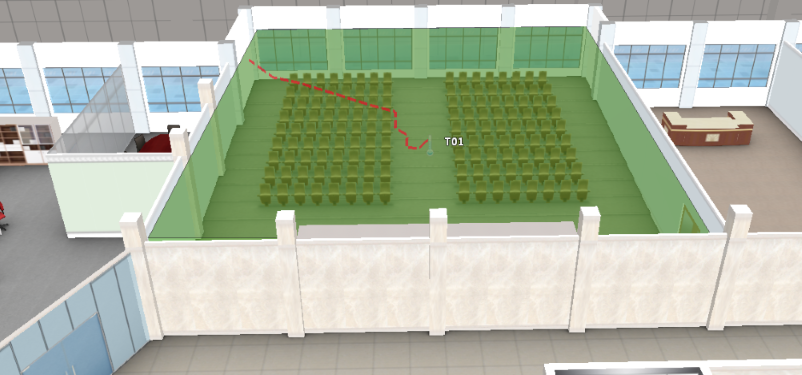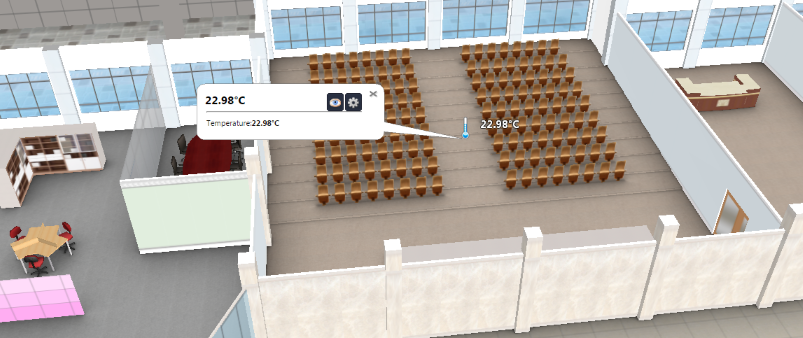

| Basics > Concepts > Devices |
In NUCLEUS, a device represents a sensor in the physical world, displaying the real-time data coming from the physical sensor. For example, a temperature sensor device in NUCLEUS can display the temperature measured by a temperature sensor, while a camera device in NUCLEUS can display a live video feed from a CCTV.
Each device belongs to a type, which defines how the real-time data is retrieved and displayed in NUCLEUS. For example, the type of a temperature sensor defines that the sensor is able to retrieve and display the temperature values where the sensor is placed.
For each device, you can add a volume or line to it. A volume is used to represent the coverage of the device, while a line can be used represent flow through a series of points. For example, a temperature sensor that is deployed in an auditorium may have its volume defined as the whole space of the auditorium, which means its value represents the temperature of the whole auditorium; meanwhile, the line of the temperature sensor is its power cable.
A device can show its effect by showing its volume and/or line, if they are specified. In the illustration below, its shows the effect of the temperature sensor T01: the volume is color as green and the line is colored as red.

In addition, each device has a callout, which is a floating window showing a set of real-time data. In the illustration below, the callout of the temperature sensor is displaying a value of 22.98°C, and the tail of the callout points to a small icon, which is actually its placemark. As for placemark, you can find the details here.

 |
SDK users can define custom device types to make a device correspond to multiple physical world sensors. For example, you can define a temperature device type in NUCLEUS to receive data from four different temperature sensors in an auditorium. |